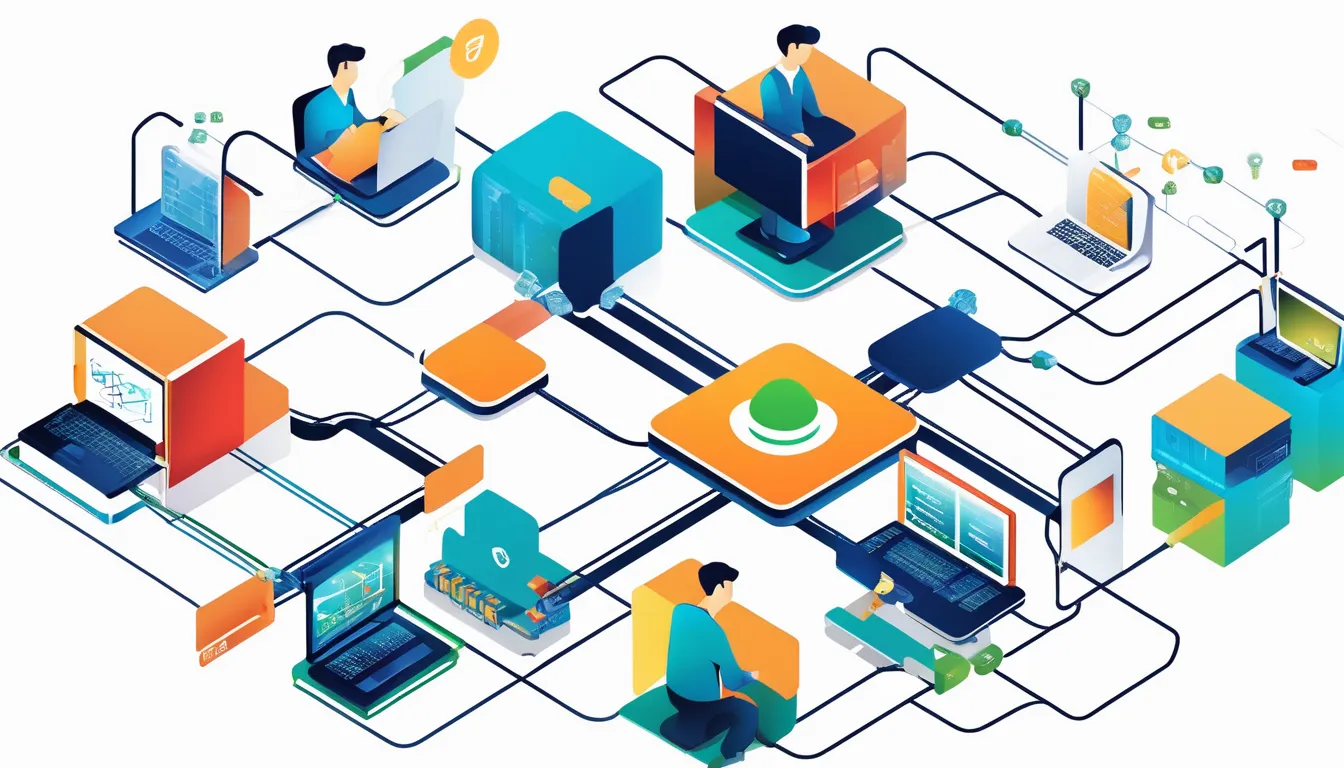
As you consider the environmental impact of your organization’s computing systems, you can’t help but wonder: are there ways to reduce the carbon footprint without sacrificing performance? The answer lies in sustainable ICT practices and green technologies. By adopting energy-efficient devices and data centers, you can lower your organization’s power consumption and e-waste generation. But that’s just the starting point. There are many more opportunities to make a positive impact, from sustainable procurement practices to e-waste reduction strategies. What are the most effective ways to implement these green technologies, and what benefits can your organization expect to see?
Green Computing Technologies
As you explore the realm of sustainable ICT, you’ll find that green computing technologies play a vital role in reducing the environmental footprint of the IT sector.
These technologies focus on designing, manufacturing, using, and disposing of computing systems in an environmentally friendly way.
You can implement green computing technologies in various areas, such as hardware, software, and network infrastructure.
When it comes to hardware, you can opt for energy-efficient devices, such as low-power processors and solid-state drives.
These devices consume less power and generate less heat, which reduces the need for cooling systems and ultimately lowers energy consumption.
In software, you can use virtualization and cloud computing to reduce the number of physical devices needed, which in turn reduces energy consumption and e-waste.
Energy Efficient Data Centers
Most data centers are notorious energy guzzlers, consuming massive amounts of power to run the servers, cooling systems, and other equipment that keep them operational. As you design and build your data center, it’s essential to prioritize energy efficiency to minimize its environmental impact and reduce operational costs.
You can achieve energy efficiency by implementing various strategies. Here are some of them:
| Strategy | Description | Benefits |
|---|---|---|
| Server virtualization | Consolidate servers to reduce the number of physical servers needed. | Reduced energy consumption, lower cooling costs, and increased server utilization. |
| Air-side economization | Use outside air to cool the data center instead of traditional air conditioning systems. | Reduced energy consumption, lower operating costs, and extended equipment life. |
| LED lighting | Replace traditional lighting with LED lights. | Reduced energy consumption, longer lifespan, and lower maintenance costs. |
Sustainable ICT Procurement
When building a sustainable ICT ecosystem, procurement plays a crucial role. You must consider the environmental, social, and economic impacts of the technologies you choose.
This involves assessing the sustainability credentials of suppliers, including their energy efficiency, resource usage, and e-waste management practices.
You should also look for products that meet recognized sustainability standards, such as Energy Star or EPEAT. These standards ensure that devices meet specific criteria automatisering energy efficiency, recyclability, and hazardous materials reduction.
When evaluating suppliers, consider their supply chain management practices, labor standards, and community engagement. Ensure that they adhere to responsible business practices and respect human rights.
In addition, consider the total cost of ownership, including the environmental and social costs, when evaluating procurement options. This will help you make informed decisions that balance your organization’s needs with its sustainability goals.
E-Waste Reduction Strategies
You’re continually generating electronic waste in your ICT ecosystem, but you can minimize its environmental impact by implementing effective e-waste reduction strategies. A key step is to adopt a reuse and refurbishment approach for your electronic devices.
This can be achieved by upgrading or repurposing existing equipment instead of discarding it. You can also consider donating or selling your used devices to extend their lifespan.
Another crucial strategy is to implement a responsible disposal program. This involves partnering with certified e-waste recyclers who can ensure that your electronic waste is disposed of in an environmentally responsible manner.
It’s essential to choose recyclers that adhere to international standards and guidelines for e-waste management.
To further reduce e-waste, you can also consider product-as-a-service models or leasing options for your ICT equipment. This approach can help reduce the volume of electronic waste generated by your organization.
Green IT Best Practices
Implementing green IT best practices is crucial to minimizing the environmental footprint of your ICT ecosystem. You’ll want to start by assessing your current IT infrastructure and identifying areas for improvement.
This includes evaluating the energy efficiency of your data centers, servers, and network equipment. Consider migrating to cloud computing or virtualization to reduce your hardware needs and lower energy consumption.
Another key best practice is to implement power management policies on your devices and equipment. This can include setting computers and monitors to turn off or go into standby mode when not in use.
You should also prioritize the use of energy-efficient devices and equipment, such as LED monitors and laptops with low-power processors.
In addition, consider implementing sustainable software development practices, such as using open-source software and designing applications with energy efficiency in mind.
Conclusion
By adopting sustainable ICT practices, you’re taking a crucial step towards minimizing environmental harm. Prioritizing energy-efficient devices and equipment, implementing sustainable procurement practices, and adopting e-waste reduction strategies all contribute to a greener future. By integrating green technologies and practices, you can lower your organization’s carbon footprint and set an example for others to follow. Make sustainable ICT a priority and reap the benefits of a more environmentally friendly computing system.



